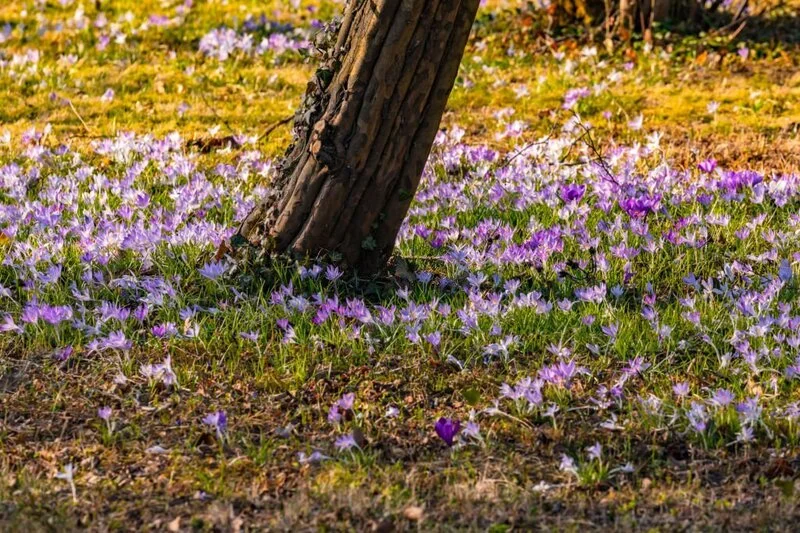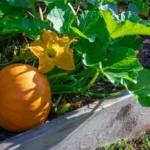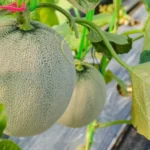Have you ever looked up into the canopy of a tree and pondered what would thrive there? Despite first impressions, the space beneath the tree’s massive branches is rich with potential plant life. However, there are difficulties involved. Explore the practice of understory gardening with me as we learn what it takes to make the space under trees bloom.
Challenges of Growing Beneath Tall Trees
The conditions for plant growth are different under large trees. One problem is that there isn’t enough shade. A towering tree’s canopy can prevent a lot of light from reaching the ground, creating a cool, shady spot there. Since many plants require ample sunshine for photosynthesizing and growth, a decrease in available light may restrict the range of plant life.
Second, large trees drink a lot of water and their deep roots can sometimes outcompete other plants for soil moisture and nutrients. The soil beneath them may become depleted of moisture and nutrients as a result.
Finally, the soil under a tree might not be the same as the soil elsewhere in your yard. Tree roots can clog it up, making it difficult to dig and plant in. Leaves and other tree detritus that falls to the ground over time can alter the soil’s acidity and composition, which in turn might hinder the growth of some plants.
Understanding Shade Tolerance
Despite these obstacles, there are a number of plant species that have adapted to flourish in partially shaded environments. The ideal plants for an understory garden are those that can survive in partial shade.
Plants of varying species have varying degrees of tolerance for shade. Light shade plants are those that can survive in partial shade but still require a lot of sunshine for optimal growth. Plants classified as “complete shade” require almost no direct sunlight at all, while those classified as “partial shade” require only a tiny amount.
By learning about shade tolerance, you may choose plants that will thrive in your garden despite the heavy shade cast by nearby trees. We’ll be discussing a wide range of plants that can thrive in these conditions, from ornamentals to edibles to ground covers, in the following sections.
Flowering Plants for Under Trees
It’s a common misconception that adding shade equals giving up color. Under your towering trees, you can plant a variety of colorful blooming shrubs and groundcovers. For instance, hostas are commonly recognized for their thick, green leaves, but their beautiful flowers are often overlooked. Ferns, another shade-loving plant, may not produce flowers, but their decorative, feathery leaves can give your garden a unique feel. Try bleeding hearts if you’re looking for something more daring. These unique plants can be identified by their heart-shaped blossoms and their preference for partial shade. Always take into account soil and moisture conditions, as well as shade tolerance, since each plant has specific requirements.
- SHADE PLANTS: Hosta ‘So Sweet’ is a wonderfully fragrant hosta, hence its name. It is a rapid grower with very shiny, dark green leaves and yellow margins in Spring.
- GROWTH: This hosta grows to be about 12 inches tall and 22 inches wide.
- CARE: All hostas need some shade and few, if any, will do well in strong direct sunlight. Water regularly. They will fully mature in four to eight years. For the best care of hostas, plant them in rich organic soil with a slightly acidic pH.
- FUN FACT: Hosta, also known as plantain lily, is a genus of about 40 plants native to Eastern Asia.
- LIVE PLANTS: Our plants are grown exclusively for Deep Roots and The Three Company, shipped fresh directly from our greenhouse to you!
Edible Plants for Under Trees
If you want to make your shade garden doubly productive, consider planting edibles! Many herbs, such as mint, chives, and parsley, can tolerate a good amount of shade and will provide a fresh harvest for your kitchen. Another option could be certain types of mushrooms. While they require very specific conditions to grow, shade is one of them, making the area under trees a potential mushroom haven!
- Easy to grow
- Aromatic leaves
- Garden use: Herb garden & containers
- Culinary use: Teas & other beverages, salads, garnish, jelly, desserts
- Plant in full sun to partial shade for the best yields
Ground Covers for Under Trees
You may make your understory garden look like a plush carpet with the help of ground covers. These groundcovers may survive in shady places with a little more effort. Ivy is a tried-and-true option due to its longevity and prolific expansion. Another choice is vinca, sometimes known as periwinkle. It can withstand harsh conditions and offer some color to your landscape with the beautiful little flowers it produces. Filling in the spaces between your larger plants with ground covers not only makes your garden look more full and lush but also helps prevent soil erosion.
- [INFO1] – One of the faster growing ground cover plants for covering large areas. It produces soft periwinkle blue flowers sporadically over early Spring to Summer. Also called Creeping Periwinkle, it’s a trailing ground cover vine that grows low to the ground with a good matting habit that is evergreen. Shade loving plant. Once established is Drought proof. Plants are fast growing for more rapid coverage.
- [INFO2] – Adaptable to most any soil, vinca minor prefers fairly good soil and is easier to control than many other creeping ground cover plants. Also referred to as Trailing Periwinkle, Creeping Periwinkle or Creeping Myrtle evergreen. As with many fast growing plants, vinca can be invasive if not monitored. With a little attention and care, it can be grown safely in most landscape settings. Plant spacing for bare root vinca minor: 12 inches apart. 100 plants will cover 100 square feet.
- [DETAILS] – Category: Groundcover Plants, Perennials, Evergreen Perennials ● Plant Type: Evergreen ● Light Requirement: Full Sun, Partial, Full Shade ● Soil Condition: Well Drained, Moist ● Bloom Season: Spring ● Bloom Color: Blue, Purple ● Mature Height: 0 – 1ft ● Growth Rate: Fast-Growing ● Planting Zone: 3, 4, 5, 6, 7, 8
- [PACKING/SHIPPING] – Greenwood Nursery takes the utmost care to make sure you get your plants healthy, vibrant, well protected & alive! BARE ROOTS = are covered with hydrating gel (hydrates while out of soil), wrapped in moist paper & placed into airtight plastic wrap (traps moisture). POTTED PLANTS = Shrink wrap/tape the Pot so soil doesn’t spill out. BOTH the Bare Root & Potted plants are secured in a Box with shipping Peanuts, to minimize movement.
- [GREENWOOD GUARANTEE] – We strive to satisfy customers with their purchase, please contact us WITHIN 14 DAYS of receipt to sort out any issues with the order! We take full responsibility for our mistakes, however proof will be required for other issues & buyers are responsible for user error! Make sure you are purchasing from our GREENWOOD NURSERY store to avoid any issues, you will know your package is from us with our Logo on the Plant & in/on the Box.
Making use of every inch of your yard by planting a garden in the shade of large trees is a great idea. Plants that thrive in partial shade can transform a frustrating gardening situation into a rewarding one.
Tips for Planting Under Trees
Ready to start your understory garden? Here are some helpful tips:
- Amend the Soil: Consider adding compost or organic matter to the soil under the trees to enrich it with necessary nutrients.
- Water Properly: Be mindful that tall trees might soak up a lot of the water intended for your understory plants. Check the soil moisture regularly and adjust your watering routine accordingly.
- Avoid Damage to Tree Roots: Be careful when planting under trees. Damaging the tree’s roots can harm or even kill the tree. Try to plant between the larger roots, rather than cutting through them.
- Plant in Groups: Grouping shade-loving plants together can help them create their own microclimate, conserving moisture and blocking out weeds.
Conclusion
The area of your garden that is in the shade of a large tree doesn’t have to be a “dead zone”. With the appropriate plants and some TLC, it may be turned into a beautiful, flourishing, and perhaps even edible haven. A wide variety of flowering plants and hardy ground coverings are available that can thrive in the shade of trees. Then why wait any longer to begin organizing your understory garden? After all, you never know what you might find in some unseen nook of your garden. Enjoy your gardening!




![Greenwood Nursery: Live Ground-Cover Plants - Vinca Minor + Lesser/Dwarf Periwinkle - [Qty: 50 Bare Roots] - (Click for Other Available Plants/Quantities)](https://m.media-amazon.com/images/I/61kEKTyxCPL._SL160_.jpg)


